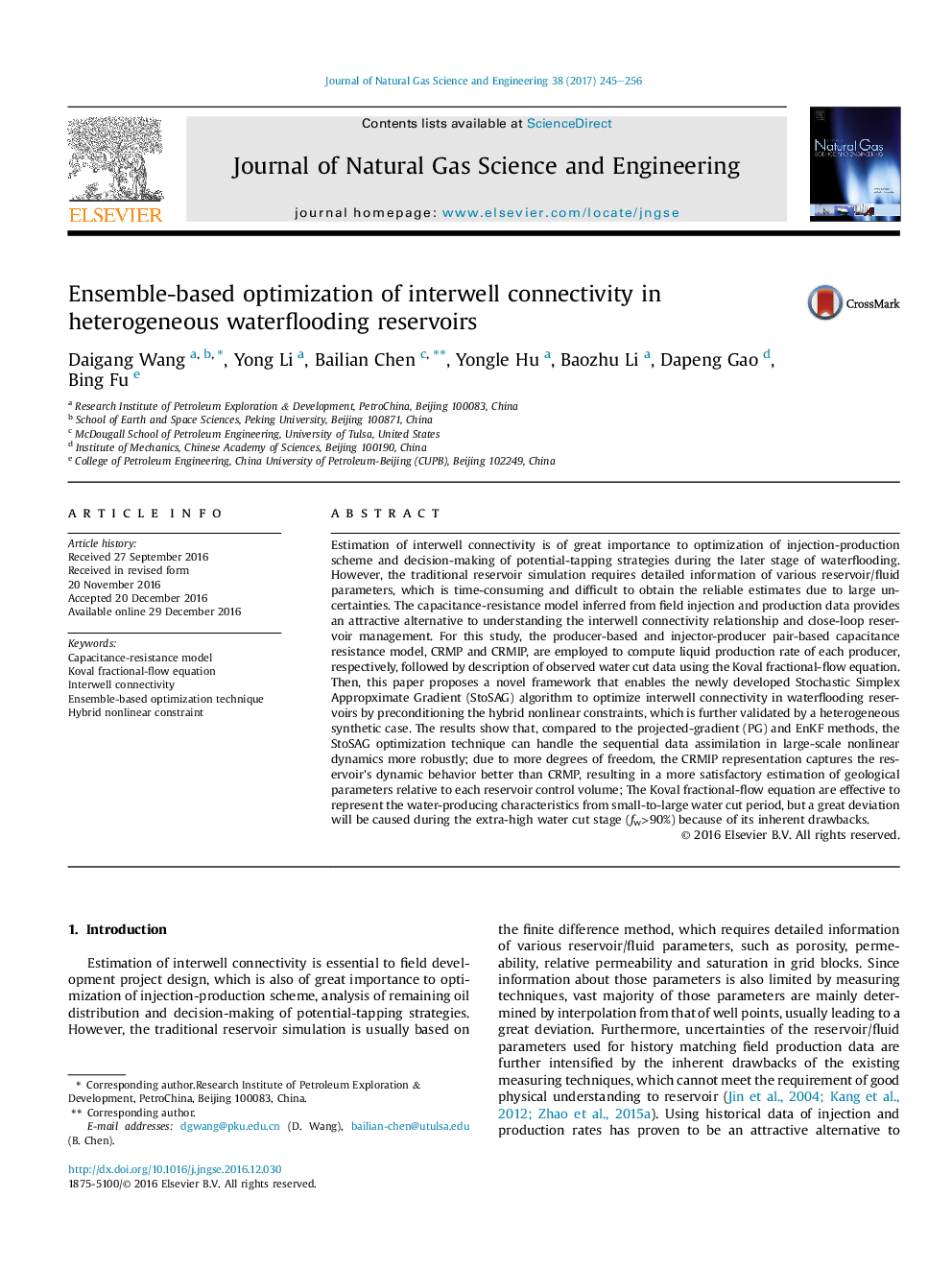| کد مقاله | کد نشریه | سال انتشار | مقاله انگلیسی | نسخه تمام متن |
|---|---|---|---|---|
| 5485171 | 1523005 | 2017 | 12 صفحه PDF | دانلود رایگان |
عنوان انگلیسی مقاله ISI
Ensemble-based optimization of interwell connectivity in heterogeneous waterflooding reservoirs
ترجمه فارسی عنوان
بهینه سازی مبتنی بر گروه اتصال اتصالات داخل حوضه در مخازن آبرسانی ناهمگن
دانلود مقاله + سفارش ترجمه
دانلود مقاله ISI انگلیسی
رایگان برای ایرانیان
کلمات کلیدی
موضوعات مرتبط
مهندسی و علوم پایه
علوم زمین و سیارات
علوم زمین و سیاره ای (عمومی)
چکیده انگلیسی
Estimation of interwell connectivity is of great importance to optimization of injection-production scheme and decision-making of potential-tapping strategies during the later stage of waterflooding. However, the traditional reservoir simulation requires detailed information of various reservoir/fluid parameters, which is time-consuming and difficult to obtain the reliable estimates due to large uncertainties. The capacitance-resistance model inferred from field injection and production data provides an attractive alternative to understanding the interwell connectivity relationship and close-loop reservoir management. For this study, the producer-based and injector-producer pair-based capacitance resistance model, CRMP and CRMIP, are employed to compute liquid production rate of each producer, respectively, followed by description of observed water cut data using the Koval fractional-flow equation. Then, this paper proposes a novel framework that enables the newly developed Stochastic Simplex Appropximate Gradient (StoSAG) algorithm to optimize interwell connectivity in waterflooding reservoirs by preconditioning the hybrid nonlinear constraints, which is further validated by a heterogeneous synthetic case. The results show that, compared to the projected-gradient (PG) and EnKF methods, the StoSAG optimization technique can handle the sequential data assimilation in large-scale nonlinear dynamics more robustly; due to more degrees of freedom, the CRMIP representation captures the reservoir's dynamic behavior better than CRMP, resulting in a more satisfactory estimation of geological parameters relative to each reservoir control volume; The Koval fractional-flow equation are effective to represent the water-producing characteristics from small-to-large water cut period, but a great deviation will be caused during the extra-high water cut stage (fw>90%) because of its inherent drawbacks.
ناشر
Database: Elsevier - ScienceDirect (ساینس دایرکت)
Journal: Journal of Natural Gas Science and Engineering - Volume 38, February 2017, Pages 245-256
Journal: Journal of Natural Gas Science and Engineering - Volume 38, February 2017, Pages 245-256
نویسندگان
Daigang Wang, Yong Li, Bailian Chen, Yongle Hu, Baozhu Li, Dapeng Gao, Bing Fu,
